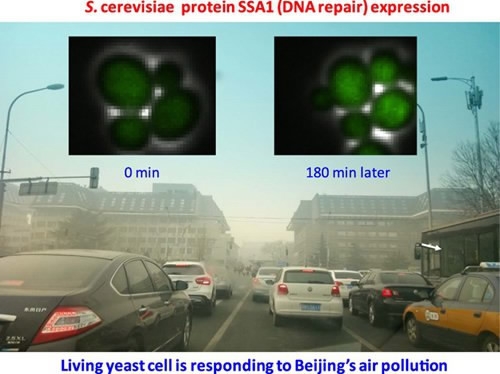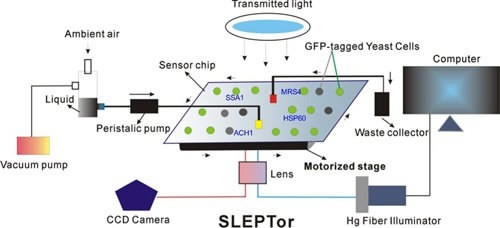Air pollution, especially PM2.5 pollution, is one of the most important environmental problems confronting humans.
Recently, a research group from Peking University made important progress on this issue through interdisciplinary research. For the first time, yeast labeled with fluorescent was used for replacing the semiconductor sensor to achieve real-time, on-line monitoring of PM2.5 toxicity.

Peking University Photo
Inspired by yeast-related studies, the research group led by Yao Maosheng, from the College of Environmental Science and Engineering, Peking University, and Luo Chunxiong, associate professor from the School of Physics, Peking University, used fluorescently-labeled yeast to construct a real-time, on-line monitoring system for toxicity monitoring of atmospheric PM2.5.
According to Yao, the PM2.5 particles were collected into a liquid first, then the liquid samples were put into a chip containing yeast.
It is understood that yeast will react to the stimuli from PM2.5 particles. By labeling all the genes of the yeast with different fluorescent proteins, it is easy to find those yeast genes reacting to the stimulation of PM2.5 particles.

Peking University Photo
It is reported that the yeast used for the research is commonly known as Saccharomyces cerevisiae which multiplies rapidly. Saccharomyces cerevisiae was the first eukaryotic genome to be completely sequenced, with the genome sequence released to the public domain in 1996. Now it is widely used in the research of human diseases.
The researchers believe that this research can help people understand possible damage to the human body by PM2.5 on the molecular level. It provides a groundbreaking method of research for studying the mechanisms of PM2.5 particles’ influence on human health.
At present, the research result has applied for national invention patent. The research group is using the system to make further studies on the toxicity of PM2.5 particles for people in different regions and countries.
1km










